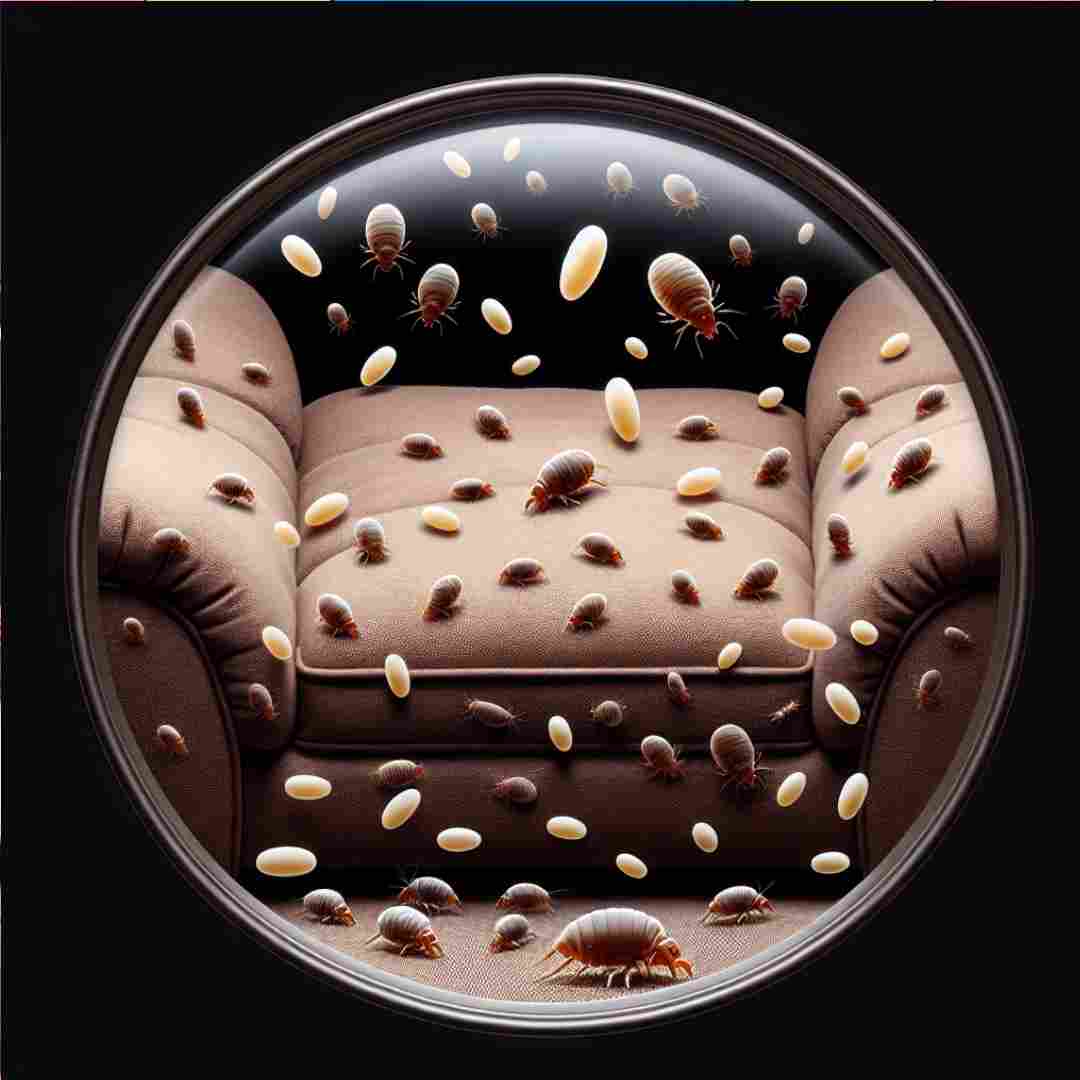Fleas are tiny, wingless insects known for their ability to jump great distances and their penchant for feeding on the blood of animals and humans. These pesky parasites can quickly become a nuisance in any home, especially if they lay eggs on your furniture. Understanding fleas and their eggs is crucial in effectively tackling an infestation. A single adult flea can lay hundreds of eggs during its lifetime, and these eggs often fall off pets, landing in carpets, bedding, and furniture. Identifying and eradicating these eggs early is essential in preventing a full-blown flea infestation, protecting your home and peace of mind.
Identifying Fleas in Your Home

Detecting fleas early can save you from the hassle of a major infestation. Start by inspecting your pets, as they are the most common hosts. Look for small, dark, fast-moving insects stealthily navigating through your pet’s fur, or check for flea dirt, which looks like tiny black specks and is often found on their skin or bedding. Next, pay attention to signs such as persistent scratching, biting, or unusual patches of hair loss on your pets. Additionally, flea bites on humans can appear as small, itchy red bumps, frequently located around the ankles or legs. In your home, you should thoroughly investigate areas where pets spend most of their time, including furniture, carpets, and pet beds. A fine-tooth flea comb and a white paper towel can help you better identify fleas and their dirt when combing through an infested area. Early identification is critical to effective control and management, allowing you to take swift action against these unwanted pests.
Common Signs of Flea Infestation

Recognizing the signs of a flea infestation early can help mitigate the spread and make treatment more effective. One of the telltale signs is noticing your pets frequently scratching or grooming themselves, as fleas often cause persistent irritation and discomfort. In addition to increased scratching, you might observe signs of hair loss, known as alopecia, particularly around the neck and tail area. In some cases, pets may develop red or irritated skin and even allergic reactions from flea saliva, leading to hot spots or other skin issues. Inside the home, flea dirt—tiny black specks resembling ground pepper—may be visible on bedding, carpets, or furniture. These specks are flea waste, consisting of digested blood, and can confirm an infestation when discovered. Another potential sign is the presence of small, oval eggs or the sighting of adult fleas jumping on curtains or upholstery. If any of these indicators are prevalent, starting a treatment plan promptly is essential to curtail the infestation and prevent further discomfort for your pets and family.
Why Furniture is a Prime Target?
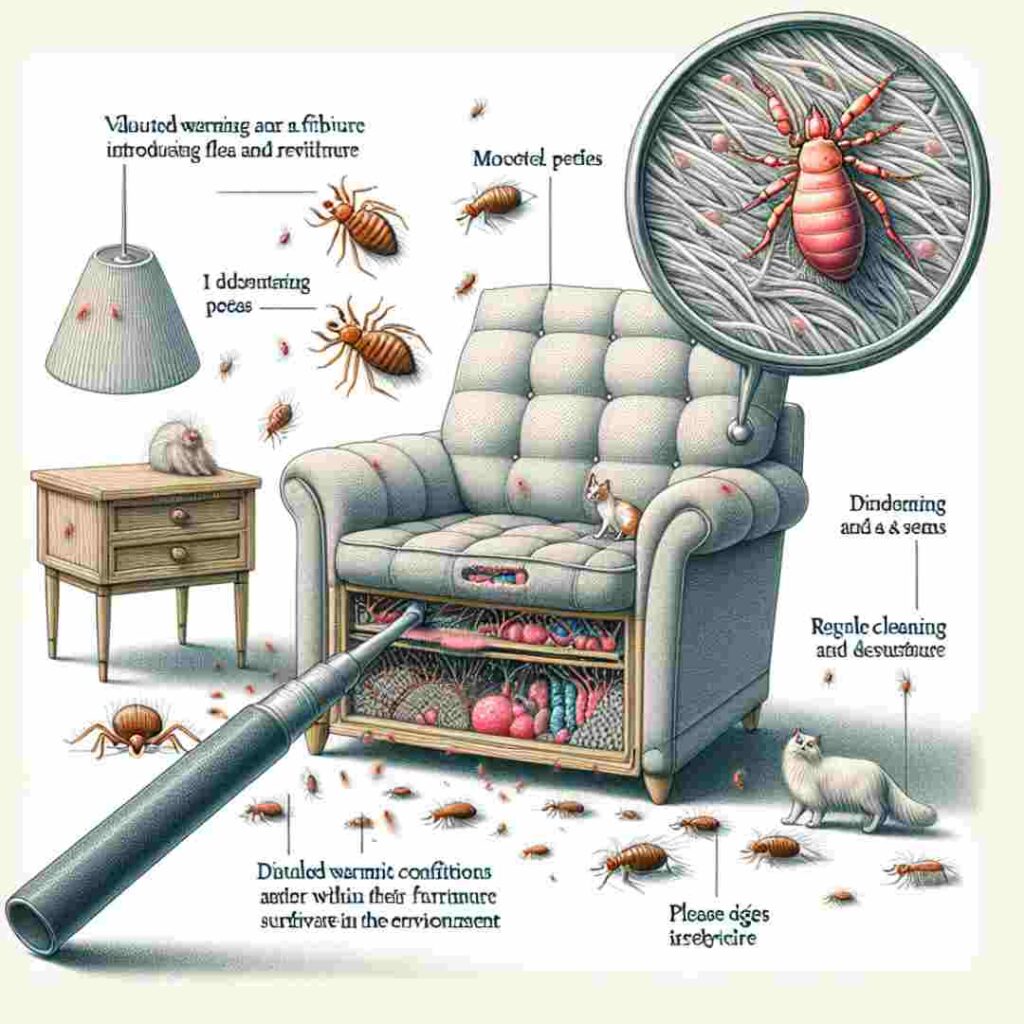
Furniture is an ideal habitat for fleas due to its structure and frequent close contact with pets. Upholstered furniture, in particular, provides a plethora of hiding spots amidst its fibers and seams, creating a haven for fleas to lay eggs and multiply undisturbed. Additionally, as pets often rest or play on sofas and chairs, they inadvertently introduce fleas and their eggs into these environments. The warmth and moisture trapped within furniture materials provide a conducive atmosphere for flea survival and reproduction. This makes couches, chairs, and even mattresses common culprits in sustaining a flea population within the home. To mitigate infestations, regular cleaning and vacuuming, combined with vigilant examination of these areas, are crucial in disrupting the flea life cycle before it can take hold.
How to Inspect Your Furniture Properly

Conducting a thorough furniture inspection is vital in managing a flea infestation. Begin by removing loose cushions and covers, as these areas are prime locations where fleas may hide and lay eggs. Carefully examine the seams, stitching, and crevices for signs of fleas or their eggs, which can appear as tiny, white oval specks. Using a magnifying glass can help identify these elusive insects. Next, check for flea dirt, which resembles tiny, dark specks that may stain a damp white cloth with a reddish-brown color due to its blood content. Pay extra attention to areas that are difficult to reach or see, like underneath the furniture or in the corners of fabric folds. Additionally, vacuum your furniture thoroughly, focusing on these hard-to-reach spots, and immediately dispose of the vacuum bag or contents to prevent fleas from escaping. Regularly inspecting and maintaining clean furniture will significantly assist in controlling the spread of fleas and protecting your home from these persistent pests.
Spotting Flea Eggs vs. Other Debris

Distinguishing flea eggs from other debris commonly found in your home can be challenging but is crucial for effectively managing a flea infestation. Flea eggs are small, oval-shaped, and almost translucent to white, making them difficult to identify against light-colored surfaces. They measure about 0.5 millimeters in length and are smooth to the touch, differing from the dirt or dust that might feel gritty. Flea eggs do not exhibit this reaction, unlike flea dirt, which will turn red when moistened due to its blood content. Other debris, such as lint, food crumbs, or pet dander, can easily be misidentified as flea eggs. However, these materials vary in texture and color, so careful inspection is necessary. A magnifying glass or flashlight can enhance visibility when examining suspect areas such as pet bedding, carpets, and upholstery. The key to effectively spotting flea eggs lies in frequent cleaning and routine checks, which help in early detection and can significantly reduce the spread of fleas in your home.
Cleaning Methods to Eliminate Fleas
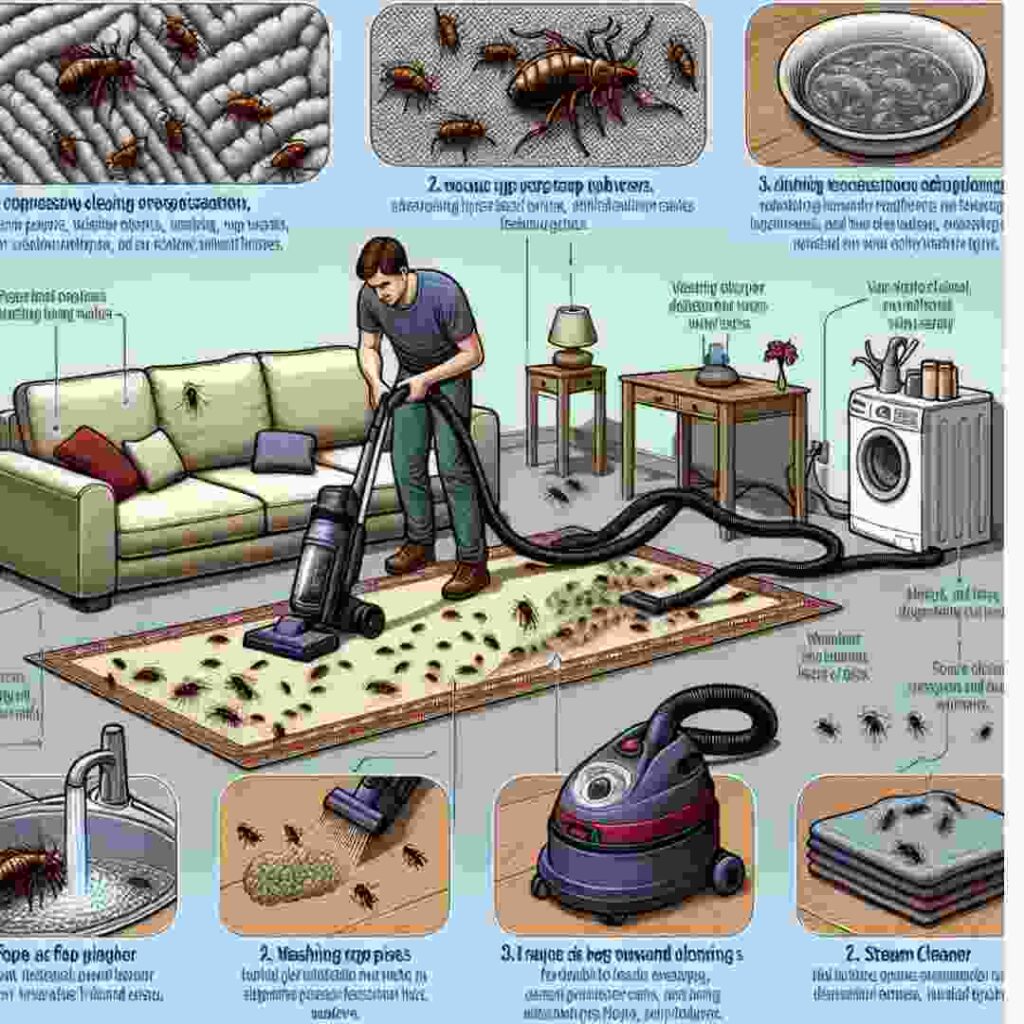
Effectively eliminating fleas from your home requires a comprehensive cleaning routine. Start by thoroughly vacuuming all floors, carpets, and upholstery, paying extra attention to areas frequented by pets. Vacuuming helps remove adult fleas, larvae, and eggs from the deep fibers where they may be hiding. Don’t remember to vacuum underneath furniture and along baseboards. After vacuuming, immediately dispose of the vacuum bag or clean the canister to prevent fleas from escaping.
Washing pet bedding, slipcovers, and any removable fabric items in hot water is essential, as the heat kills fleas and their larvae. For more oversized items or non-washable surfaces, consider using a steam cleaner. The high temperature from steam cleaning can eliminate fleas at all life stages.
Applying a safe, pet-friendly insecticide spray to carpets and upholstery can effectively measure persistent infestations. Follow the instructions carefully and keep pets and children away from treated areas until completely dry. Additionally, using diatomaceous earth, a natural powder, can help desiccate and kill fleas without chemicals. Sprinkle lightly over carpets and furniture, let it sit for several hours, then vacuum thoroughly.
Regular cleaning and maintenance, combined with preventive measures such as flea treatments for your pets, will significantly reduce the chances of reinfestation and keep your home flea-free.
Preventative Measures for Future Infestations
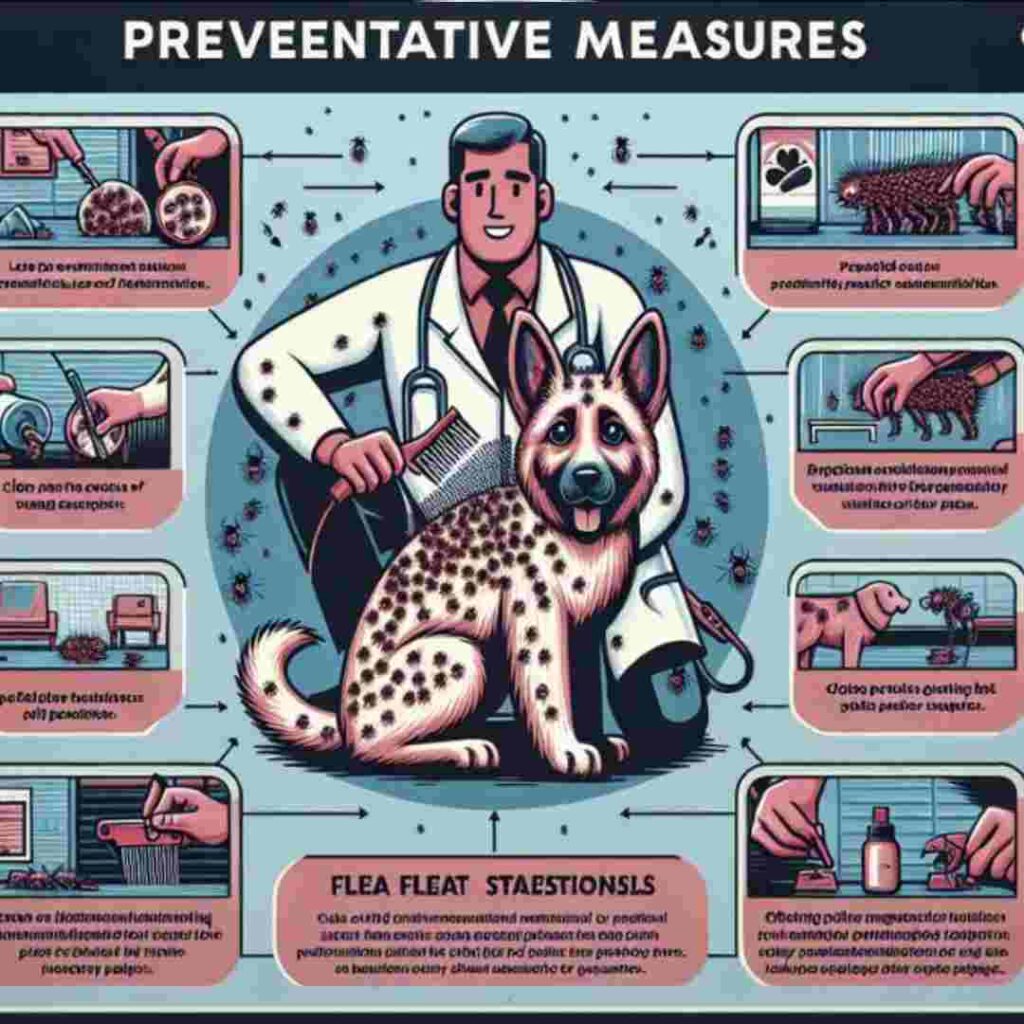
Preventing future flea infestations requires a proactive approach to maintain a clean and hostile environment for these pests. Begin by implementing routine flea treatments for your pets, as they are often the primary carriers of fleas into the home. Use veterinarian-recommended topical or oral flea preventatives to protect your pets year-round, even in cooler months when fleas are still indoors. Consistently grooming pets with a flea comb can also help catch stray fleas before they multiply.
In addition to treating pets, regularly wash pet bedding, toys, and other accessories in hot water to eliminate fleas or eggs. Maintain a regular cleaning schedule for your home, focusing on areas where pets frequently rest or play. Vacuuming floors, carpets, and furniture every week can significantly reduce the flea population and deprive them of breeding grounds.
Sealing cracks and crevices around doors and windows can minimize the chance of fleas entering from the outside. Consider using flea deterrents such as flea traps or natural repellents like citronella, eucalyptus, or lavender essential oils. Employ these measures as part of an ongoing household routine to safeguard against future flea infestations, ensuring a comfortable and pest-free environment for your family and pets.
When to Call Pest Control Experts
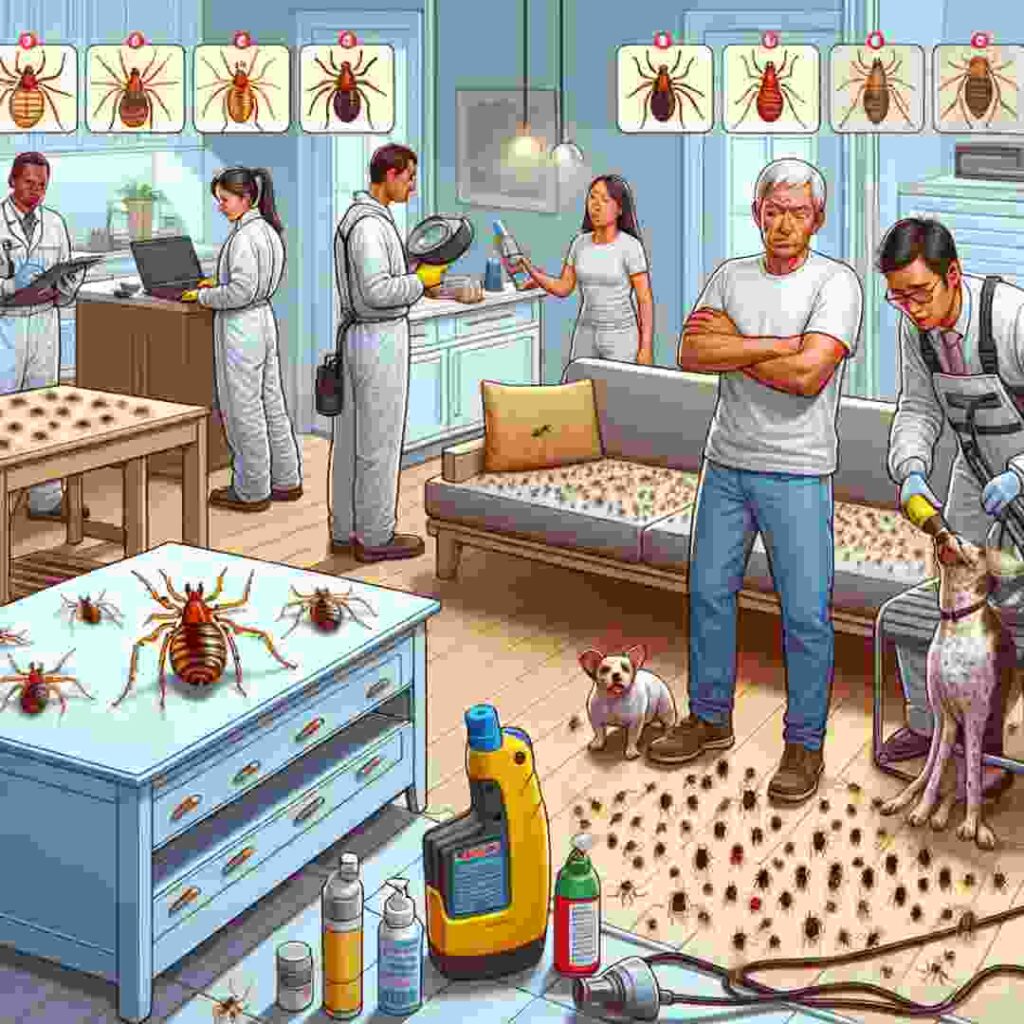
Despite diligent efforts to manage a flea infestation, there are situations where professional pest control intervention becomes necessary. If you have tried multiple home remedies and treatments without seeing a reduction in the flea population, it may be time to call the experts. Persistent infestations affecting the health of family members or pets, causing allergic reactions, or leading to secondary problems such as skin infections warrant professional evaluation. Additionally, if the infestation has spread to multiple areas of your home, making it challenging to manage effectively, seeking the help of experienced pest control specialists can offer comprehensive eradication solutions. Professionals can access advanced tools and treatments not available for public use, ensuring a more thorough approach to eliminating fleas. Consider scheduling an inspection with pest control experts when home remedies have failed to provide relief, guaranteeing a swift resolution and restoring peace and comfort to your household.
Frequently Asked Questions
1. How do fleas enter my home?
Fleas often enter homes through pets that have been outdoors, but they can also hitch a ride on people’s clothing or belongings. They thrive in warm, humid environments and can quickly spread once inside.
2. Can fleas live on humans?
While fleas prefer animal hosts, they can bite humans to feed on blood. However, unlike pets, they do not typically live on human skin or hair.
3. How long does a flea infestation last?
A flea infestation can persist for months without intervention, as fleas go through several life cycle stages and reproduce rapidly. Effective pet treatment and thorough home cleaning are essential to disrupting the cycle.
4. Are there natural remedies to control fleas?
Natural remedies, including diatomaceous earth, essential oils, and vinegar, can help repel or kill fleas. However, their effectiveness can vary, and they are often best combined with traditional methods.
5. What’s the best way to prevent fleas after getting rid of them?
Regular flea prevention for pets, frequent vacuuming, washing pet bedding, and sealing entry points in the home are vital measures. Consistently applying these practices will help keep fleas at bay.
6. How can I tell if my pet has fleas?
Signs include:
- Frequent scratching.
- Red bumps on the skin.
- Spotting flea dirt in your pet’s fur or bedding.
Utilizing a flea comb can help in detecting fleas or their droppings.
Conclusion: Keeping Your Home Flea-Free
Maintaining a flea-free home involves a combination of diligent cleaning, preventive measures, and, when necessary, professional help. Consistently applying flea treatments to your pets, combined with regular cleaning of pet bedding and household surfaces, forms the cornerstone of preventing infestations. Beyond the day-to-day actions, being proactive about sealing entry points and considering natural deterrents can minimize the risk of fleas entering your home. Integrating these strategies into your routine protects your pets and family from discomfort and ensures a hygienic and enjoyable living environment. If challenges arise or infestations persist, seeking the expertise of pest control professionals can provide the peace of mind and practical solutions needed to keep your home comfortably flea-free.







